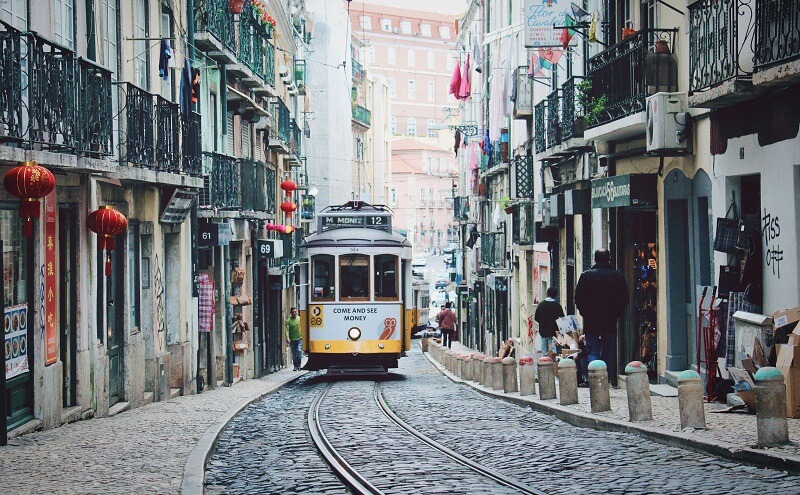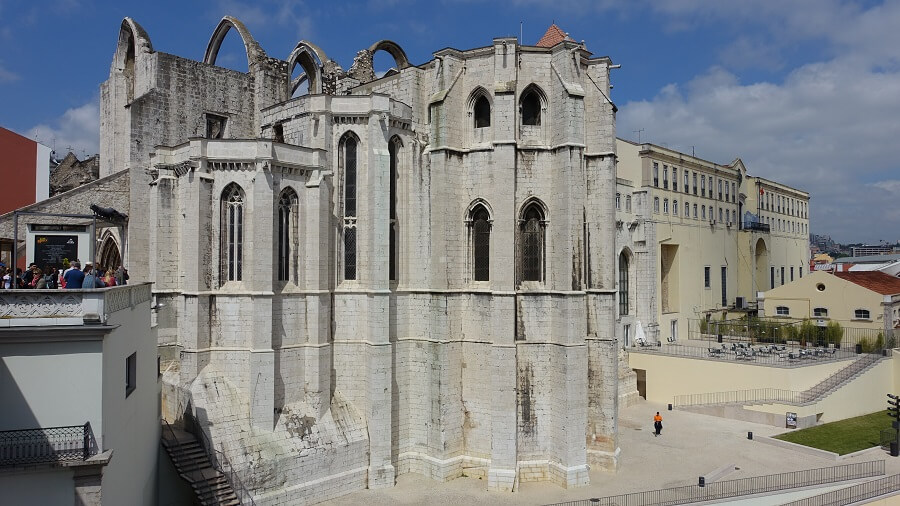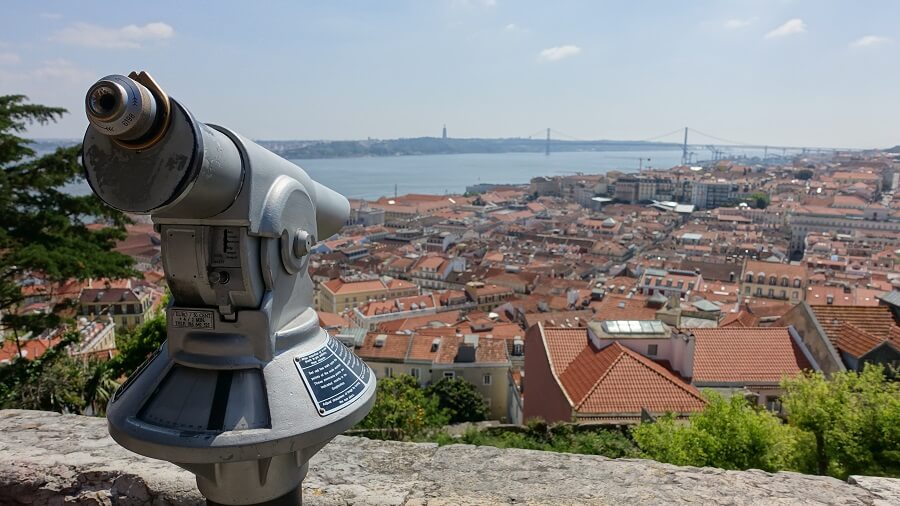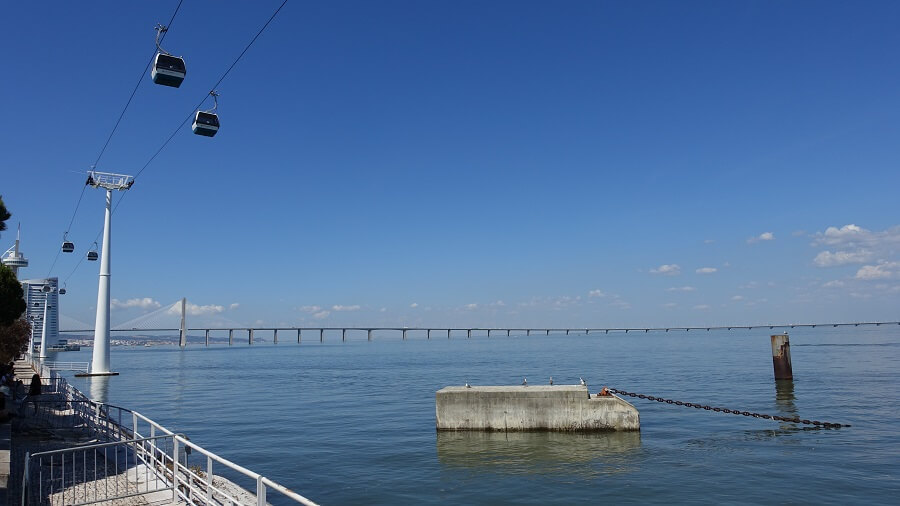WHAT ARE THE BEST THINGS TO DO AND SEE IN LISBON?
Lisbon, Portugal’s largest city, is also the most westerly capital of Europe. It is also one of the most beautiful cities on the continent thanks to its unique charm that has remarkably survived over time, but also thanks to its unusual topography that offers spectacular views worthy of a postcard.
Known for its paved floors that embellish each of its alleys, it offers a very pleasant atmosphere and walking around allows you to discover districts with a rich historical and cultural heritage.
Known as the city of 7 hills, Lisbon is increasingly popular with tourists looking for authenticity, a low cost of living, and an excellent climate: sun and heat are present in Lisbon for most of the year. The Portuguese capital is also known for its culinary specialities and its relaxed atmosphere.
On this page, you can discover in pictures the main experiences not to be missed in Lisbon, its must-see tourist sites (monuments, districts, museums…) and the activities to do.
Although it is impossible to see everything at once, this selection may be useful for you to plan a travel itinerary if you are going to visit Lisbon for the first time, giving you an idea of the best things to do and the places to visit.
WHERE TO SLEEP IN LISBON?
Here is the top 3 hotels in Lisbon that have the best ratings on Booking, sorted by price range:
- Low budget: Home Lisbon Hostel (great location, reception open 24 hours a day, dormitories but comfortable beds)
- Medium: Casa Belmonte (nice staff, clean, quiet and well located, common kitchen)
- High-end: Feels Like Home Chiado Prime Suites (modern rooms, superb view, close to the center and great breakfast)
Here are 15 things to do and see while traveling in Lisbon:
1. The Monastery of Hieronymites (in Belem)
Located in the Belém district, the monastery of the Hieronymites (‘Mosteiro dos Jerónimos’ in Portuguese) is certainly the most beautiful building in Lisbon. Seen from the outside it is quite imposing but it is especially for its cloister that it deserves a visit, impressive with its two floors with superbly decorated arches and which was strangely spared by the 1755 earthquake that struck Lisbon. If you only have to visit one monument in Lisbon, it must be this one. It has been classified as a UNESCO World Heritage Site since 1983. At the end of the building is the Musée de la Marine, which is also very interesting to visit.
2. Take the tramway n°28
The old yellow trams are one of the symbols of Lisbon, and the most famous, tram 28, winds through the hills and narrow alleys where it almost touches the walls (and poorly parked cars). Ideally, do it at the very beginning of your stay in Lisbon, very early in the morning or late in the afternoon because it attracts a lot of tourists. You will be able to discover the most popular districts of the capital and see many monuments.
3. Visit Sintra and the National Palace of Pena
Sintra is a small town located 25 km from Lisbon, easily accessible by train from Rossio station (30 min drive) and then by bus. The Portuguese rulers built superb palaces on the hills of the Serra de Sintra with extravagant architectural styles, in particular the Palace of Pena and its bright colours (see photo) as well as its 200 hectare park, which is the city’s main attraction. The place also offers panoramic views of the surroundings. Plan two days of visit to discover all the interesting sites of Sintra – and a small budget! (one day for the Palace of Pena and its park).
Also to be seen in Sintra:
- The National Palace of Sintra
- The castle of the Moors
- Monserrate Palace
- The Regaleira Palace
4. The walk between Cascais and Estoril
Accessible by train from Lisbon (25 minutes), the charming seaside resorts of Cascais and Estoril run along the coast west of Lisbon and are an ideal destination for those who want to spend a day outside Lisbon to enjoy the region’s most beautiful beaches. Ideally, you should take the train directly to Cascais, then walk along the promenade to Estoril to catch the train back to Lisbon.
5. The Santa Justa elevator
Built in the historic centre of the city of Lisbon, Santa Justa’s old wrought iron elevator connects La Baixa to Chiado. Built in the early 1900s, it is 45 metres high. At the top, there is a lookout and a café, from where you can admire a magnificent view of Lisbon – you can feel that it moves a little when there are people there! It is located just next to the Convento do Carmo and if you do not wish to queue to take it, it is still possible to access the summit free of charge by taking the stairs behind the lift.
6. The Carmelite Church (Igreja do Carmo)
Located next to the Santa Justa elevator, the convent and the Gothic style church were built between 1389 and 1423. On November 1, 1755, the church, then full of faithful, saw its roof collapse during the violent 9.0 magnitude earthquake that struck Lisbon. The church was never rebuilt, only the walls and arches that supported the roof are still visible. There is now a small archaeological museum where you can see an Egyptian sarcophagus and two Inca mummies.
7. The Alfama district and the Castelo de São Jorge
Located on the slope between the castelo de São Jorge and the Tagus, Alfama is one of the most typical districts of Lisbon. This was where the poorest inhabitants of Lisbon once lived. You can discover an authentic atmosphere by walking through its narrow, winding streets. There are also a number of important historical monuments, but the area is best known for its fado bars (traditional music). The best view of the Alfama is from the Miradouro de Santa Luzia.
8. Discover the districts of Bairro Alto, Chiado and La Baixa.
La Baixa is the most central district of Lisbon, completely rebuilt after the 1755 earthquake and easy to locate on a map with its right-angled streets. There are shops, restaurants and hotels (ideal for staying in Lisbon because it is quite quiet in the evening). It is also the district best served by public transport (to go to Sintra, Belém…).
The Bairro Alto and its cobbled streets are the district for partygoers: not very pretty when you visit it during the day (a lot of graffiti and quite dirty) but it is very lively in the evening and it is where Lisbon’s night life is concentrated (it is also noisy – avoid staying there).
Chiado is a traditional shopping district with beautiful squares, luxury shops, theatres and museums. Locals and tourists alike come to shop or have a coffee.
9. Eating at Mercado da Ribeira
Also known as Time Out Market, this large hall opened in 2014 is the result of a Time Out magazine project and brings together under the same roof some thirty stands serving gourmet dishes created by star chefs, Japanese and Italian cuisine… you can also simply go there to enjoy a glass of wine or a beer. The dishes are generally cheap. Be careful, the place attracts a lot of people around noon, so try to come a little before the opening of the stands to find those that interest you. It is also a very friendly place with its large wooden tables, where you can easily start a conversation with other visitors sitting next to or in front of you. To avoid queuing, you will be given a very useful beeper that will alert you when your dish is ready.
10. Admire Lisbon from the Miradouros
As the historic centre of Lisbon is built around seven hills, there are “miradouros”, public terraces that offer breathtaking views of the city and are open at any time of the day. From there, you can enjoy superb panoramic views of Lisbon for free. Some of them are very lively, with kiosks serving coffee shops, musicians, souvenir stands… To see in particular:
- The miradouro of Santa Luzia (the most visited)
- The miradouro of Santa Catarina
- The Miradouro de São Pedro de Alcântara
- The Miradouro de Graça
- The viewpoint of Senhora do Monte
- The viewpoint of the Portas do Sol
11. Admire the view from Cristo Rei
The monument of Christ the King (Cristo Rei) gathers a statue and a gigantic religious sanctuary. The whole is 110 metres high, including 28 metres for the statue. This one dates from 1949 and was inspired by the statue of Christ the Redeemer in Rio de Janeiro, Brazil. Overlooking the suspension bridge 25 of Abril, the monument faces Lisbon and the Tagus River. To get there, take the ferry from Cais do Sodré to Cacilhas, then take the 101 bus to the top. You can enjoy the view for free but to take the lift and admire the 36o° panorama at the foot of the statue, the entrance costs 4€.
12. Visit the Museo de Oriente
Opened in 2008 and housed in a former refrigerated warehouse, it is a modern museum that houses a very fine collection of objects related to the history of the Portuguese presence in Asia: traditional art objects and clothing, but also samurai armour, ceramics, and paper puppets from Southeast Asia. The place is not often visited by tourists and it is very pleasant to visit, especially if you are looking for a place with air conditioning and a little peace and quiet! The museum restaurant offers an excellent buffet at a reasonable price and with a splendid view of the Tagus River.
13. The Triumphal Arch of Augusta Street
The Arch of Triumph (Arco da Rua Augusta), located in the La Baixa district, stands at the end of the main shopping street Augusta and overlooks the Praça do Comercio. It is possible to access the summit via an elevator and enjoy a panoramic view of the city. A room presents the history of the building, which was designed in 1755 but only completed in 1875.
14. Taste nata pasteis
A pastel de nata is a kind of typical Portuguese pastry flan. You can taste it in any coffee or pastry shop in Lisbon. The pastry shop was probably created in the 19th century by the nuns of the monastery of the Hieronymites located in Belém. La Fábrica dos pastéis de Belém, opened in 1837, makes them in a traditional way and is certainly the most popular place in Lisbon where you can taste them (although personally I find that there is no difference with those sold in other shops except that they are served hot). Expect to wait in line!
15. Walk around Parque das Nações
Parque das Nações (Park of Nations), located on the Tagus River east of the city centre, was once an abandoned industrial area that was redeveloped for the 1998 International Exhibition and is now the most modern part of Lisbon, with green spaces, large shopping centres and a promenade along the Tagus River. Not to be missed:
- the cable car
- the Vasco Tower of Gama
- the Oceanário (Lisbon aquarium)
- the Science Museum (Pavilhao do Conhecimento)
- the Vasco de Gama shopping centre.
- the Oriente station and its impressive architecture
Before you go to Lisbon
- Book your hotel in Lisbon on Booking.com
- Buy the Lonely Planet Lisbon travel Guide on Amazon.com
















